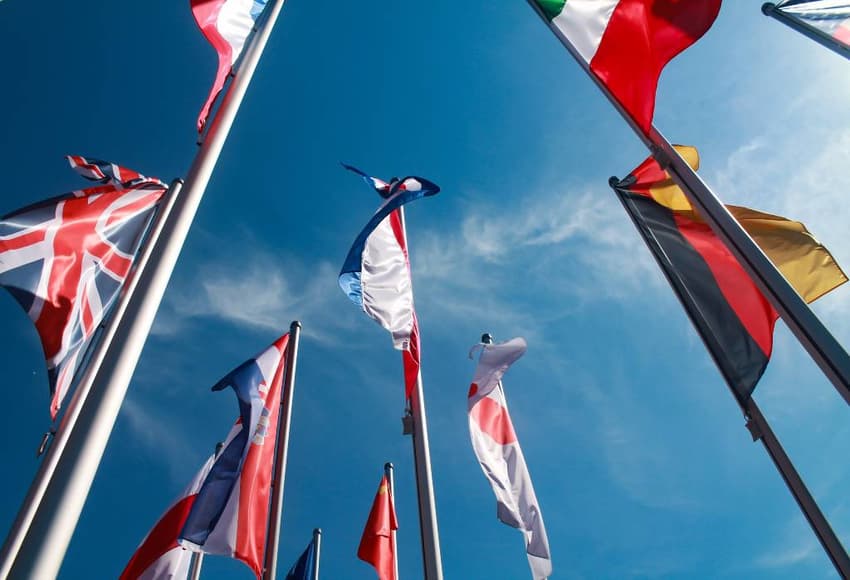Denmark's highest court reviews right to fly foreign flags

Denmark's Supreme Court will examine the case of a Danish family convicted for displaying the flag of the United States, judicial authorities said on Friday.
The case concerns the validity of a law dating back to 1915 that prohibits Danes from flying flags other than that of the Scandinavian country, an ordinance meant to preserve its neutrality during World War I.
One morning in June 2017, the Hedegård family was surprised to see the police at their door in a residential area of Kolding, a city in western Denmark.
After complaints from a neighbour, police demanded its removal or face a fine of 2,500 kroner (about 330 euros).
The family said they were not acting in bad faith but chose to fly the flag because they had a deep affection for American culture.
“We feel we are a part of American culture in Denmark,” Rikke Hedegård told local newspaper JydskeVestkysten.
"I could understand if it were a Nazi or Islamic State flag. But an American flag, I can't understand at all," Hedegård told the newspaper.
"I thought I had seen enough of it, and it was too much,” the neighbour who made the complaint said.
The family was ordered to stand trial for violating the 1915 ordinance, with prosecutors citing a similar case from 1934 concerning a Soviet flag that determined the rule was also valid in peacetime.
The Hedegårds were acquitted, with the argument that the flag ban was no longer legally binding.
However, that ruling was overturned by the high court last November, although no sentence was imposed given the length of the judicial procedures.
There are some exceptions to Danish flag rules – the Greenland and Faroe Islands flags, along with flags of the other Nordic countries, the EU and the UN may be flown, according to Ministry of Justice guidelines.
If permission is given to fly other countries’ flags, this is usually on condition that a Danish flag of at least equal size be hoisted alongside the foreign flag.
READ ALSO: Danish flag trend sparks outrage
Comments
See Also
The case concerns the validity of a law dating back to 1915 that prohibits Danes from flying flags other than that of the Scandinavian country, an ordinance meant to preserve its neutrality during World War I.
One morning in June 2017, the Hedegård family was surprised to see the police at their door in a residential area of Kolding, a city in western Denmark.
After complaints from a neighbour, police demanded its removal or face a fine of 2,500 kroner (about 330 euros).
The family said they were not acting in bad faith but chose to fly the flag because they had a deep affection for American culture.
“We feel we are a part of American culture in Denmark,” Rikke Hedegård told local newspaper JydskeVestkysten.
"I could understand if it were a Nazi or Islamic State flag. But an American flag, I can't understand at all," Hedegård told the newspaper.
"I thought I had seen enough of it, and it was too much,” the neighbour who made the complaint said.
The family was ordered to stand trial for violating the 1915 ordinance, with prosecutors citing a similar case from 1934 concerning a Soviet flag that determined the rule was also valid in peacetime.
The Hedegårds were acquitted, with the argument that the flag ban was no longer legally binding.
However, that ruling was overturned by the high court last November, although no sentence was imposed given the length of the judicial procedures.
There are some exceptions to Danish flag rules – the Greenland and Faroe Islands flags, along with flags of the other Nordic countries, the EU and the UN may be flown, according to Ministry of Justice guidelines.
If permission is given to fly other countries’ flags, this is usually on condition that a Danish flag of at least equal size be hoisted alongside the foreign flag.
READ ALSO: Danish flag trend sparks outrage
Join the conversation in our comments section below. Share your own views and experience and if you have a question or suggestion for our journalists then email us at [email protected].
Please keep comments civil, constructive and on topic – and make sure to read our terms of use before getting involved.
Please log in here to leave a comment.